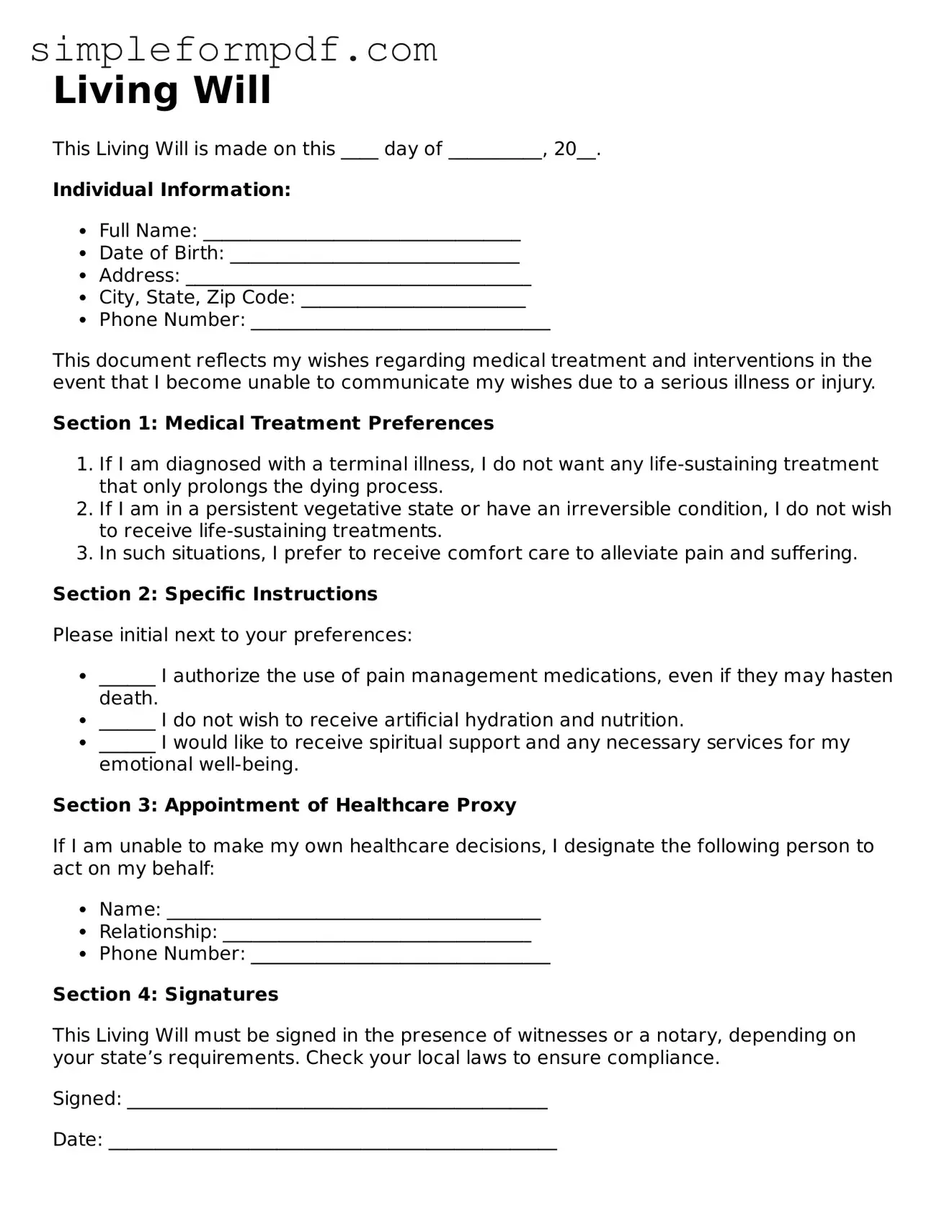Living Will
This Living Will is made on this ____ day of __________, 20__.
Individual Information:
- Full Name: __________________________________
- Date of Birth: _______________________________
- Address: _____________________________________
- City, State, Zip Code: ________________________
- Phone Number: ________________________________
This document reflects my wishes regarding medical treatment and interventions in the event that I become unable to communicate my wishes due to a serious illness or injury.
Section 1: Medical Treatment Preferences
- If I am diagnosed with a terminal illness, I do not want any life-sustaining treatment that only prolongs the dying process.
- If I am in a persistent vegetative state or have an irreversible condition, I do not wish to receive life-sustaining treatments.
- In such situations, I prefer to receive comfort care to alleviate pain and suffering.
Section 2: Specific Instructions
Please initial next to your preferences:
- ______ I authorize the use of pain management medications, even if they may hasten death.
- ______ I do not wish to receive artificial hydration and nutrition.
- ______ I would like to receive spiritual support and any necessary services for my emotional well-being.
Section 3: Appointment of Healthcare Proxy
If I am unable to make my own healthcare decisions, I designate the following person to act on my behalf:
- Name: ________________________________________
- Relationship: _________________________________
- Phone Number: ________________________________
Section 4: Signatures
This Living Will must be signed in the presence of witnesses or a notary, depending on your state’s requirements. Check your local laws to ensure compliance.
Signed: _____________________________________________
Date: ________________________________________________
Witness One: _________________________________________
Date: ________________________________________________
Witness Two: _________________________________________
Date: ________________________________________________
